Jamie Starr. Joey Coco. Alexander Nevermind. Christopher. Camille. The Artist Formerly Known as … And, simply, a symbol.
No matter what you call him, Prince Rogers Nelson is one of a kind. Whether you like funk, R&B, jazz, or straight-up, blistering rock ‘n’ roll, Prince has got something for you. There aren’t many artists in the history of music that have three, four, maybe five masterpieces in their collection like the Purple One does, nor are there many who crank out consistently good music at his pace. He’s certainly one of the most unique artists still making music today, so it’s about time he gets a Popdose guide, don’t you think? Over the course of a few posts we’ll talk about all his albums and a few side projects and maybe even introduce you to a song or two you haven’t heard before. Enjoy.
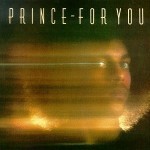 For You (1978)
For You (1978)
The world’s first real glimpse at the soon-to-be superstar shows an overzealous 19-year-old doing a bit too much too soon. Prince made it a point to list all the instruments he plays in the liner notes, and mind you, it’s all of them, with only a little help from others. There’s definitely some magic on the record that you can hear in his first hit song, ”Soft and Wet,” but for the most part only real Prince enthusiasts need to go back this far. For You is certainly one of his most straightforward releases, but after decades of experimentation and unique sounds, going back to this album is almost boring. The final track, ”I’m Yours,” is the only gem, featuring some blistering guitar solos.
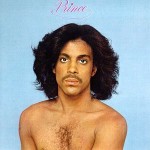 Prince (1979)
Prince (1979)
The most remarkable thing about Prince’s self-titled second record is how significantly better it is than the debut. Written, recorded, and released soon after For You didn’t sell very well, Prince is a more diverse record with quite a few memorable moments. You get the suave, young Prince, hair flowing and bare-chested on the cover, and you really start to get a glimpse of the sexual thoughts that seem to constantly be running through his mind. There’s an immediate attraction to the album thanks to the wise decision to put the singles, ”I Wanna Be Your Lover” and ”Why You Wanna Treat Me So Bad?,” right up front. Plus you get Prince’s first memorable ballad, ”Still Waiting,” and the pre-Chaka Khan’d, original version of ”I Feel for You.” For most artists this eponymous album would be a classic. For Prince, however, it’s merely decent.
 Dirty Mind (1980)
Dirty Mind (1980)
If the previous record gave a hint of Prince’s sexuality, then this one hits you over the head like a ton of bricks. The bare-chested Prince is back on the cover, but this time you get a little more, down to his black-bikini-bottomed crotch. And the songs themselves just ooze dirty sex, from the funky tale of a bride-to-be going down on him in ”Head” to the joys of underage incest in ”Sister” (as if 18-and-over incest wouldn’t have been enough). People talk about how controversial this album was 30 years ago, but hell, it’s still a bit shocking. But the reason Dirty Mind makes your jaw drop isn’t the lyrics — it’s the remarkable style change from Prince’s first two albums. R&B takes a backseat to a lot of rock and a little punk, but overall this is really the funkiest new-wave record on the planet. The centerpiece of the album has to be the awesome keyboard solo in ”Head,” courtesy of one of the earliest members of the Revolution, Dr. Fink.
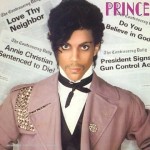 Controversy (1981)
Controversy (1981)
For the first time in his brief career, Prince neither changed his style nor drastically improved upon it. Controversy kind of feels like the little brother of Dirty Mind, with an overall sexiness due largely in part to ”Do Me, Baby”; sung in his falsetto voice with the last few minutes of the track featuring an orgasm, it’s his most sultry song yet. But there are many parts of the record that don’t work so well. The political tone of ”Ronnie, Talk to Russia” and Prince’s first real oddball number, ”Annie Christian,” feel out of place, as does the whimsical and silly album ender, ”Jack U Off,” which is notable only because it’s the first time ”you” becomes simply ”U” in Prince parlance. The whole second side flows rather poorly as well, making Controversy something of a letdown.
 1999 (1982)
1999 (1982)
Any part of me that was let down by Controversy was amazed at the remarkable difference in quality just one year later. A breakthrough of immense proportions, everything came together beautifully on Prince’s fifth record, 1999, which of course goes down as one of the highlights of his entire career. A hipper writer than me taking on this crazy task of chatting about all of Prince’s opuses would probably try to dig up the flaws in the record and prove why it doesn’t stand up to other releases, but if there even are any, they aren’t worth talking about. The biggest thing you notice right away is that Prince has matured to the point where it ain’t all about the nookie. Okay, so lines like ”I sincerely want to fuck the taste out of your mouth” in ”Let’s Pretend We’re Married” and the fact that the first number in 1999 looks like a penis on the album cover don’t exactly prove my point here, but Prince works on his computer theme, which will appear in many places throughout his career, in ”Something in the Water (Does Not Compute),” and talks about politics and freedom in the appropriately titled ballad ”Free,” topics that will also show up quite a bit in the next few years. The album may start off with the four charting singles — ”1999,” ”Little Red Corvette,” ”Delirious,” and the aforementioned ”Let’s Pretend” — but if you haven’t given the album a good listen in a while, stick around till the end and lend an ear to one of his most sensual ballads, ”International Lover.” 1999 also marks the first real mention of Prince’s backing band: the words ”and the Revolution” appear on the cover, backward and hidden, inside the I in his name.
 Purple Rain (1984)
Purple Rain (1984)
So, how do you follow up a five-star record if you’re Prince? Only with a scale breaker that goes down as one of the best rock n’ roll records in the history of recorded music, that’s how. I’ve never been one to really criticize the taste of others too much, as Lord knows mine is eclectic, but if you’re a fan of Prince and you don’t think this is a front-to-back masterpiece, I’d have to argue that mommy dropped you on your head one too many times growing up. Apart from the silly back-masking of the lyrics at the end of ”Darling Nikki,” Purple Rain is a perfect blend of rock, pop, funk, and R&B, the likes of which very well could still not be matched. The album is fully credited this time to Prince and the Revolution, but of course with Prince there are a lot of mysteries, so how much Brown Mark, Wendy & Lisa, Dr. Fink, and Bobby Z. really contributed to the record could probably be debated, but if you can get your hands on the Revolution’s live shows from the mid-’80s, they’re a force to be reckoned with. The thing I love about Purple Rain (and 1999 as well) is that I can easily get tired of hearing ”When Doves Cry” or ”Let’s Go Crazy” on the radio, but when I listen to the album as a whole, there’s a new burst of energy in the songs that you miss if you break it down into single tracks. And of course the title track is probably the best album ender in the history of music. The guitar solo and those strings — I mean, it’s goosebump central every time.
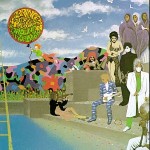 Around the World in a Day (1985)
Around the World in a Day (1985)
I kind of feel bad for Around the World in a Day. I mean, it’s got to be tough to be the follow-up to one of the greatest albums ever made. Prince already did it once following 1999, but to do it again would have been a stupendous feat. Unfortunately, he didn’t even come close. The crazy psychedelic mountains on the cover and the fact that Around was released with virtually no advance warning should’ve set off a big ol’ light bulb that something crazy was inside, but it was hard to expect this level of craziness. It’s the least accessible album Prince had put out up to this point, and was definitely much darker than previous releases. The big pop number ”Raspberry Beret” feels very out of place here, as does the excellent political track ”America.” Actually, so does the other big hit from the album, ”Pop Life,” which sounds like it should’ve been on Controversy or Dirty Mind instead. Overall, Around the World in a Day just doesn’t hold up very well, and ranks as a tough listen in my book. However, I’ve always been keen on ”Tamborine,” which sounds a lot like the funk tracks Robert Palmer was working on around this time.
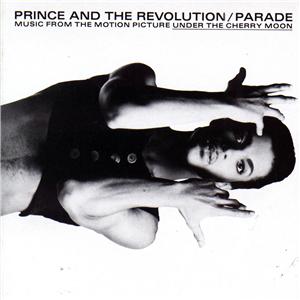 Parade: Music from the Motion Picture Under the Cherry Moon (1986)
Parade: Music from the Motion Picture Under the Cherry Moon (1986)
Of all of Prince’s albums, this one stumps me the most. If you’re trying to listen to this from start to finish, the first thing you have to do is make it past the first four songs. They run into each other almost like a song cycle, but all four feel like they’re unfinished. Both the opener, ”Christopher Tracy’s Parade,” and the third track, ”I Wonder U,” sound like a random jumble of mismatched parts. All four are under three minutes, though, so at least getting past them doesn’t take long, but you should really start with track five, ”Girls & Boys.” Over the years I’ve heard Prince perform it live without what some consider to be the ”duck” sounds of the keys, and it’s truly a remarkable song, though the version on Parade can be a little strange at times. It’s followed by the crazy, disjointed ”Life Can Be So Nice,” which just cuts off in the middle of a line and transitions into a piece that’s more like part of the score to the movie, Under the Cherry Moon, which was Prince’s directorial debut (and a huge box office flop). Flip the record over, though, and you find the way underrated ”Anotherloverholenyohead” and one of Prince’s best songs, ”Kiss.” It’s a song that wasn’t intended for himself; he gave it to one of his project bands, Mazarati (formed with the aforementioned Brown Mark), as a demo, and when he heard how they reworked it, he decided to take it back and created the track we all know and love. Overall, Parade has its moments, but it’s an album that deserves to be deconstructed and passed on as a whole. However, many don’t agree, and some would even call me “tin-eared” and ”lead-assed.” So be it.
 Madhouse, 8 (1987)
Madhouse, 8 (1987)
Madhouse, 16 (1987)
I guess normally in these Popdose guides we only look at the albums credited directly to an artist, but I’m making some exceptions here. I mean, if I’m going to talk about 40-some albums, then I’m taking some liberties as well. Prince had been wanting to do some jazz fusion-type stuff for a few years, which led him to his side project, Madhouse. They’re included here because Prince formed the group with friend Eric Leeds of the Revolution and the Family, and was the leader for all four records. The songs are virtually all instrumentals, with titles of ”1″ through ”8″ on 8 and ”9″ through ”16″ on 16 (clever, ain’t he?). 8 featured Prince on all instruments except sax and flute, which Leeds contributed; 16, released late in ’87 after Sign o’ the Times, also featured Sheila E. on drums and Levi Seacer Jr. on bass (he was in the New Power Generation in the ’90s). 8 is the best Madhouse record of the four, led by the funky ”6″ and the apparently orgasm-inducing ”7″ (that’s Vanity providing the evidence — okay, so she’s faking it — and the same moaning and groaning was used again on Prince’s Come album in ’94.) 16 isn’t as good, but it’s no less intriguing thanks to the totally gangsta “13.”
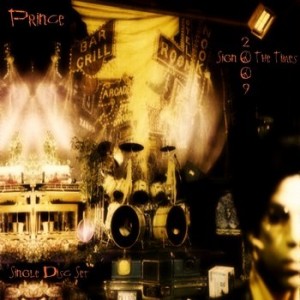 Sign o’ the Times (1987)
Sign o’ the Times (1987)
Before Sign o’ the Times it must have seemed like Prince’s best music was behind him. Or, at the very least, after putting out eight records in eight years, maybe a short break and chance to regroup was needed. Instead, as he would do throughout the years, Prince would defy logic once again and set out to release an insane amount of material to the public. The story seems to go that he intended to make a double-LP set with the Revolution, which he first dubbed “Dream Factory,” but he dissolved the group and then dropped some tracks and reworked others into “Crystal Ball,” which became a three-LP venture. Warner Bros. nixed the idea (and this was before Prince really had it in his head to screw with them), however, and forced Prince to pare it down to two discs. There are bootlegs of what might have been “Dream Factory” out there that include some of the unreleased tracks, and all of the songs from the scrapped “Crystal Ball” album ended up being released in some form over the years except for one. As a whole, the project was a sprawling epic recording. However, it does have some strange transitions and some filler, which Sign o’ the Times doesn’t — Prince ended up paring the final version of Sign down to two LPs/CDs.
Now that we have the backstory out of the way, tell me, who in the house know about the quake? I mean really, really? If you ain’t hip to it, shut up already, damn! All of that of course is paraphrased from ”Housequake,” one of the baddest dance songs Prince has ever recorded. If that ain’t the centerpiece of the first disc, then most certainly it’s ”Starfish and Coffee,” which in my book is the most melodic pure-pop song he’s ever made. The quirky yet irresistible title track, the down and dirty ”Hot Thing,” and the underrated ”The Ballad of Dorothy Parker” are the glue that holds the first disc together. The second disc has a bunch of songs you know as well — ”U Got the Look,” ”If I Was Your Girlfriend,” and ”I Could Never Take the Place of Your Man” — plus another gorgeous album ender in ”Adore.”
”Girlfriend,” ”Housequake,” and ”Strange Relationship” were originally slated for Prince’s scrapped “Camille” record (but it seems like they were also on “Crystal Ball”/”Dream Factory,” so who the hell knows), Camille being the female alter ego that sounds like Prince, only sped up. The only track from “Camille” that hasn’t been released in some form is the same one I mentioned above from “Crystal Ball,” the superfunky ”Rebirth of the Flesh.” Overall, another complete masterpiece from the Purple One.
 Lovesexy (1988)
Lovesexy (1988)
I’ve always loved the guy, but the fucker pissed me and a lot of fans off with the release of Lovesexy. If you own the CD and it’s not the original pressing, you might not even know it, but the original disc has all nine tracks without breaks, creating one long 45-minute track. That’s how it sits on my iPod today, as I refuse to buy a new version. So I either listen to the entire record or scroll until I get to the tracks I want to get to. Funny, though — I think Lovesexy flows better than almost any other Prince album, so if he ever wanted to make a song cycle, this was the place, I suppose. Now, I guess calling Prince a ”fucker” a few sentences ago might make you think I have some severe hatred stored up for Lovesexy, but I don’t. Not at all, really. In fact, I think it’s one of his most underrated albums.
In the past, Prince has called this a gospel record. Of course, one listen to the orgasm between him and Cat Glover in the title track might convince you otherwise. But who’s to argue with Prince, which makes this the very first gospel record I ever listened to, and to date, it’s the only one I love. Lovesexy almost never existed, though. The Black Album was supposed to be released in the fall of ’87 (it finally came out seven years later) but was pulled at the last moment, with Lovesexy taking its place on store shelves six months later. It shares one track with The Black Album, the awesome ballad ”When 2 R in Love,” but otherwise has a completely different vibe. The three songs in the middle of the record are the highlights: the confessional track ”Anna Stesia,” killer funk rock in ”Dance On,” and the aforementioned title track. The album had three singles, but only the ridiculously good ”Alphabet St.” hit the Billboard pop chart. Prince has made a ton of money off this track, having sued and won payment from two different artists for sampling or covering it: In 1992 Arrested Development made the unfortunate mistake of simply using the word ”Tennessee” from the song and turning it into the chorus of their hit of the same name. Unfortunately for Speech and company, once the song got big, Prince sued and won $100,000 from them for unauthorized use. Two years later, the Jesus and Mary Chain covered “Alphabet St.” as a B-side, and word is the group pretty much went broke paying Prince after that lawsuit. The only person who hasn’t been sued for ”Alphabet St.,” as far as I know, is Trent Reznor, who sampled it for ”Ringfinger” on Nine Inch Nails’ debut album, 1989’s Pretty Hate Machine. (Ironically, most stores wouldn’t carry Lovesexy as is since its cover showed Prince in the nude, so they replaced the cover art with a black sleeve reminiscent of The Black Album.)
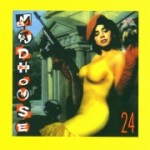 Madhouse, 24 (1989)
Madhouse, 24 (1989)
Another Madhouse album here, although 24 has never seen the light of day. A quartet this time, consisting of Prince, Sheila E., Levi Seacer Jr., and Eric Leeds, 24 was funkier than the previous two Madhouse records and contained far more electronics. The sax is still heavily present, so it still feels like a jazz record, though it’s closer in feel to later New Power Generation jam sessions. It’s also notable for being the first Madhouse records that contained alpha titles like ”18 (R U Legal Yet?)” and ”19 (Jailbait).” Tracks ”21″ through ”24″ are a cycle called ”The Dopamine Rush Suite” and actually contain vocals rather than just samples. 24 is as good as the first two Madhouse records and might have a broader appeal in the end.
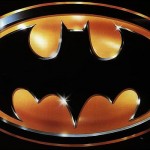 Batman (1989)
Batman (1989)
The Batman soundtrack is a hit-or-miss affair. Apart from some strings, samples, dialogue from the film, and Sheena Easton duetting on ”The Arms of Orion,” Prince recorded the entire album himself. There are a lot of people who really dig this album as a soundtrack, which is in stark contrast to Danny Elfman’s score (an album was issued for it as well), but other people feel it has a lot of throwaway songs on it. One of the reasons for that theory is that this is the rare instance where Prince signed over the publishing rights to the album to Warner Bros., which is the reason you never see ”Batdance” show up on his greatest-hits discs. Therefore he didn’t put his best songs on an album for which he wouldn’t own the rights to any of the songs. But if that’s truly the case, then Prince’s junk is better than most artists’ real work. The second single, ”Partyman,” is a great pop song, and the uniquely titled ”Lemon Crush” is a funky head bobber. And of course ”Batdance” goes down as the most unlikely #1 hit of the 80s. It’s the last track on the disc and also a last-minute addition, supposedly replacing “Dance With the Devil” because Prince thought it was too dark compared to the rest of the songs on Batman.
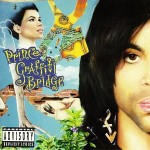 Graffiti Bridge (1990)
Graffiti Bridge (1990)
The Graffiti Bridge soundtrack (it was Prince’s second — and last — film as a director) is the segue album between original-era Prince and New Power Generation Prince. The soundtrack was entirely written by him (with some help on a few tracks), though four of the songs are performed by the Time, with one by Mavis Staples and one by George Clinton, and Graffiti Bridge introduced the world to Tevin Campbell with the excellent ”Round and Round.” The latter track, as well as the two-part ”New Power Generation” and the #6 hit ”Thieves in the Temple,” were the only new tracks on the record. All the other songs were created in previous sessions, going all the way back to the Controversy record for ”Tick Tick Bang.” Many were reworked, but some showed up in their original format (that says something about the timelessness of Prince’s music). The centerpiece of Graffiti Bridge is ”Joy in Repetition,” a sultry ballad that’s been performed a lot in concert over the past few years.
In part two, we’ll take a look at Prince’s New Power Generation records and watch him pummel the world with music as he tries to get out of his Warner Bros. recording contract.




Comments